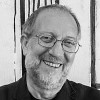Saviour to Killer
A famous Horace quote reads: “Nothing is an unmixed blessing”. This underlines the dual nature of human innovations ~ how they can solve our problems but also create new ones which lead to disasters. Yogi Berra aptly said: “The future isn’t what it used to be.” This aphorism was used by Sir Arthur C Clarke, and later by Apple Computer co founder Steve Jobs as a preface to their optimistic extrapolations about the future of technology.
It also holds good appropriately in case of an well-known synthetic organic chemical named Dich Lo ro diphenyl trichloroethane (in short, DDT). This pleasant smelling white powder was initially hailed as savior of humanity but finally it has been blamed as a destroyer. Till the chance synthesis of urea, an organic compound, in the laboratory by Friedrich Wohler in 1828, scientists firmly believed that organic compounds are synthesized only in living bodies of animals and plants under the influence of their unique living force or vital forces. J J Berzelius coined the term “organic compounds” for products derived from living beings.
Advertisement
In 1828, Wohler unexpectedly got urea, an organic compound, in the laboratory while he attempted to prepare ammonium cyanate from cyanic acid and ammonia, all inorganic compounds. After achieving success in synthesizing an organic compound like urea in the laboratory out of inorganic compounds, he was so overwhelmed that he wrote a letter to Berzelius stating that “I must tell you that I can prepare urea in the laboratory without requiring a kidney of an animal, either man or dog.” Encouraged by the achievement of Wohler in synthesizing urea in a laboratory, Othmar Zeidler, an American student, who was working on his doctorate under the supervision of legendary chemist Adolf van Baeyer, successfully prepared DDT in 1874.
Advertisement
This white, tasteless, water insoluble, fat soluble, crystalline chemical attracted no attention until the Swiss chemist Dr. Paul Hermann Muller (also known as Pa uly Mueller) revealed its insect icidal property. The organic synthetic chemical has changed the world dramatically and completed its 150th birth anniversary in 2024. Dr. Pauly Mueller began his career as a research chemist for the dye division of J R Geigy (one of Switzerland’s reputed chemical manufacturers) in Basel in May 1925; and successfully, produced synthetic tanning agents.
Actually he was keenly interested in the study of plants including their protections. He even once said that his love for plants led him to choose botany as a minor subject at university. So, when, in 1935, Geigy began research on moth-and plant-protection age – nts, Muller actively involved himself. In 1937, he patented a technique for synthesizing novel rhodanide ~ and cyanate ~ based compounds which showed bactericide and insecticide activity. He also developed the........






















 Toi Staff
Toi Staff Gideon Levy
Gideon Levy Daoud Kuttab
Daoud Kuttab Jason Hickel
Jason Hickel Yossi Klein Halevi
Yossi Klein Halevi Tarik Cyril Amar
Tarik Cyril Amar Rachel Marsden
Rachel Marsden Andrew Silow-Carroll
Andrew Silow-Carroll Mikhail Salita
Mikhail Salita Belen Fernandez
Belen Fernandez Constantin Von Hoffmeister
Constantin Von Hoffmeister
